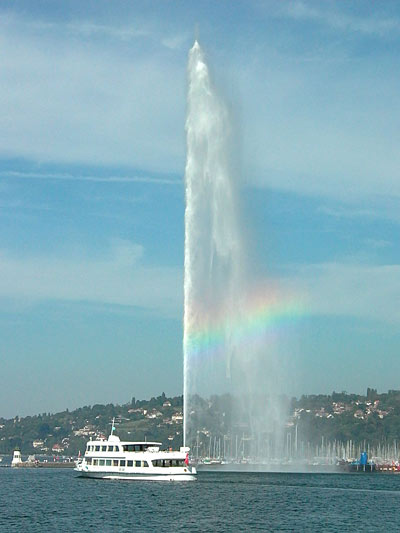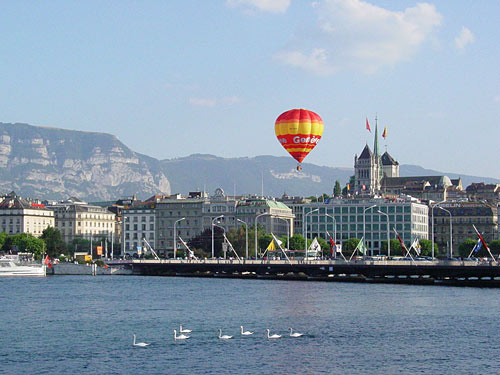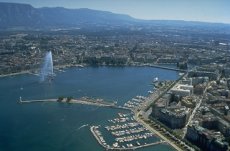Geneve

Geneva is the capital of the canton of the same name, and is Switzerland's second biggest city. It lies in the south-west, near the border with France, at the western end of Lake Geneva, where the Rhone flows out of the lake.
A number of international organisations have their headquarters in Geneva. These include the European headquarters of the UN, the International Committee of the Red Cross (ICRC), the World Health Organisation (WHO), the International Labour Organisation (ILO), the UN High Commission for Refugees and CERN, the European Organisation for Nuclear Research.
Geneva is also well known for its watches. The Geneva Seal, or Poincon de Geneve, is a quality hallmark which is only granted to a select range of luxury watches according to strict criteria. Each year Geneva holds an exclusive fair, the International Salon for Prestige Watchmaking.
Geneva is also known for its car fair, held every year in March. Other fairs held in Geneva include the Inventors' Fair and the Book Fair.
The city has Switzerland's second largest airport, Cointrin. It is linked directly by rail with Paris, and also with Milan, via the Rhone valley. Within Switzerland it has direct trains to Lake Constance at the opposite end of the country via Bern and Zurich.
In international surveys ranking cities of the world for their quality of life, Geneva usually figures very near the top.

History
Geneva was a settlement even in Celtic times. It was an important transshipment point under the Romans, who named it Genava.
The Germanic Burgundians, who conquered the area in the 5th century, made it their capital for a time.
The city was the seat of a bishop from around 400 until the Reformation, when the bishop was driven out and the city became one of the major Protestant centres in Europe under Jean Calvin. The influx of refugees it attracted contributed to its economic and cultural upsurge.
In 1602 the city defeated the Duke of Savoy and forced him to abandon his territorial claims against it. Geneva then remained a small city state until it was briefly absorbed into France in 1798, before becoming a Swiss canton in 1815.
Jet d'eau (Water Fountain)

In 1886, a company located at the end of the lake used to pump and distribute water under pressure to provide the craftsmen’s machines in former times. At night-fall the need was decreasing and in order to diminish the pressure inside the canalizations, a litlle hole existed at the extremity of this pumping factory installed at La Coulouvreniere resulting in a water fountain of a few meters.
In 1891, the City of Geneva decided to install the Jet d’eau (Water Fountain) where it is today, on the Rade, together with electric lighting. But it is only since 1930 that it was permanently lit.
To project half a cubic meter of water per second up to 140 meters high requires two powerful groups of motorpumps representing a global weight of over 16 tons and a total power of close to 1000 kilowatts, fed by an electric tension of 2400 volts. The water is drawn in a circular water-sump and is directed towards an exit pipe where the speed reaches 200 km/h (130 miles per hour).
For a leisurely exploring the Geneva select Hotel in Geneva.